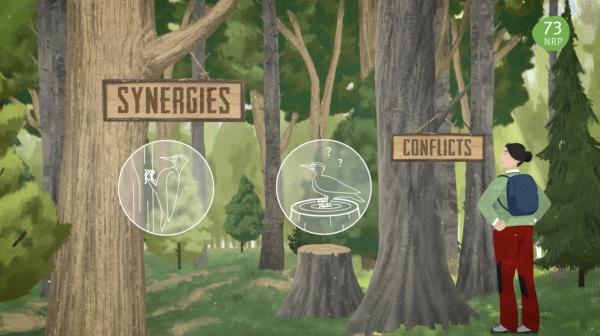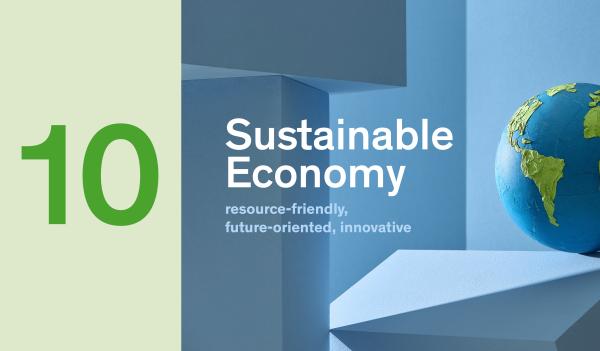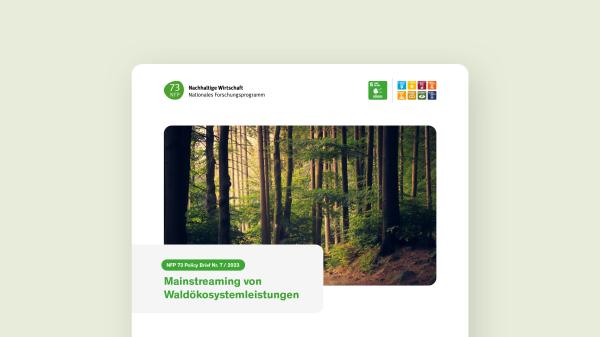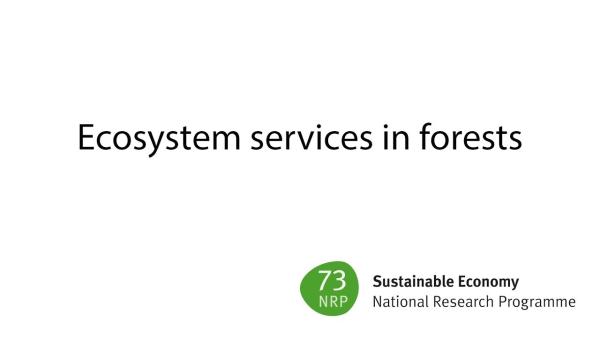Ecosystem services in forests
Which forest management method will improve services in our forests in future? We simulated the growth of forests in two computer models using various management and climate scenarios. This enabled us to evaluate different ecosystem services on the basis of a number of indicators.

Background
Forestry managers and owners have been planning their forests for centuries, primarily with a view to optimising timber yield. Today, Swiss forests are expected to perform a wide range of services, such as protecting against avalanches and mudflows, and as a place for recreation. Some of these services can be performed simultaneously, while others compete with each other. Megatrends such as climate change and the transition to cleaner energy are creating new challenges for the long-term safeguarding of our forest ecosystem services. The forest management strategy adopted influences which forest services are promoted as a priority.
Aim
The aim of the project was to develop a decision-making aid that will enable forestry operations to simulate how successfully their forests could perform services in the future. The prototype links the Swiss forest growth model SwissStandSim with operational forestry data, and provides criteria for evaluating the extent to which certain forest services fulfil their purpose. The forest management methods and future climate scenarios are variable.
Results
Key information for forest development
A statistical method has been developed that uses sample data from small individual areas to extrapolate entire forests, regardless of their scale. This means that stand models such as SwissStandSim can now be provided with the necessary information. By investigating mortality, we were also able to improve the description of empirical dying processes and thus make considerable progress in forest development modelling for the whole of Switzerland.
Prototype decision-making aids for Swiss forest management
The prototype decision-making aids developed were used to carry out three simulations of forestry operations up to 2060. Two operations are located in the Swiss Central Plateau region, and one in the Alpine foothills. All the simulations were carried out using the current climate as well as three future climate scenarios, “wet”, “medium” and “dry”. We set the main objective of the required ecosystem services to timber yield or biodiversity/recreation quality for the two Central Plateau operations, and to protection for forestry operations in the Alpine foothills. It became apparent that two of the operations are already using a management method that achieves the best overall benefit. This demonstrates that forest management is already very sustainable in the operations examined. The investigation also showed that for all the operations a total halt to timber use would have the lowest overall benefit.
The decision-making aid is initially available as a prototype. To make this tool user-friendly and accessible to everyone it requires a graphical user interface, while the model needs to be easier to adapt to new stands and the simulation time needs to be optimised.
Implications for research
One key scientific insight lies in the development of a new statistical method that uses sample data to derive valid descriptions for individual stands. By analysing mortality we gained some new and important insights into the modelling of forest development across Switzerland. The scientific publications on the case studies testify to the quality of the prototype developed.
Implications for practice
Together with practice partners from the forestry sector, sustainable forest management strategies were defined for different types of forest. Forest development models were used to estimate the ecological and economic effects of these different forest management systems over long periods and for various scales. The findings of this study have been incorporated into a prototype IT-based decision-making support system. The results of this research project therefore provide new scientific insights, as well as a decision-making aid for forest managers and owners with regard to the sustainable development of ecosystem services in Swiss forests.
Publications
Project leaders
Dr. Esther Thürig
Eidg. Forschungsanstalt für Wald
Schnee und Landschaft WSL
Dr. Markus Huber
Eidg. Forschungsanstalt für Wald
Schnee und Landschaft WSL (bis 31.07.2018)
Dr. Brigitte Rohner
Eidg. Forschungsanstalt für Wald
Schnee und Landschaft WSL (ab 01.08.2018)
Project partners
Dr. Christian Temperli
Eidg. Forschungsanstalt für Wald
Schnee und Landschaft WSL
Dr. Golo Stadelmann
Eidg. Forschungsanstalt für Wald
Schnee und Landschaft WSL
Dr. Jürgen Zell
Eidg. Forschungsanstalt für Wald
Schnee und Landschaft WSL
Dr. Oliver Thees
Eidg. Forschungsanstalt für Wald
Schnee und Landschaft WSL
Prof. Dr. Harald Bugmann
Institut für Terrestrische Oekosysteme
ETH Zürich
Bundesamt für Umwelt BAFU






